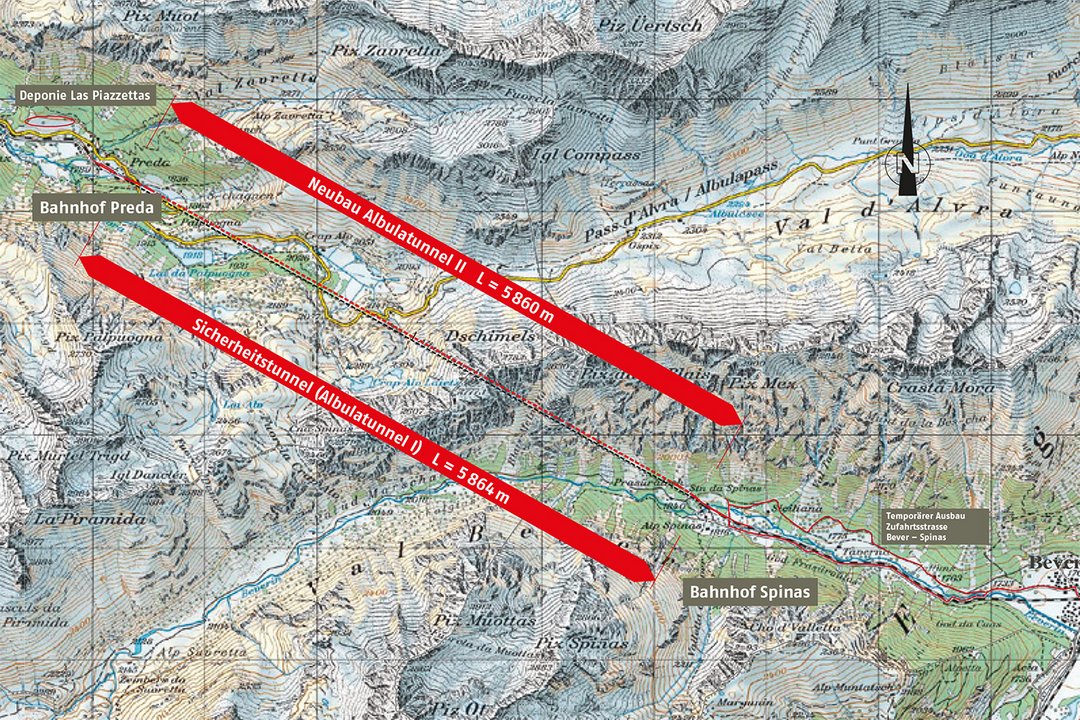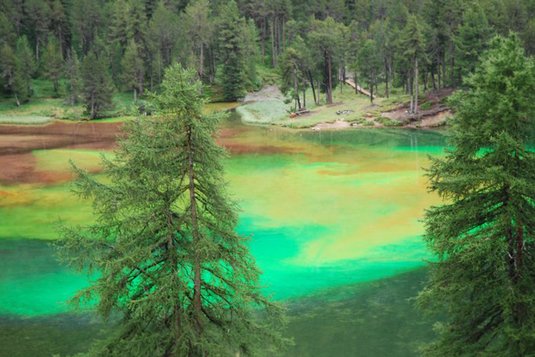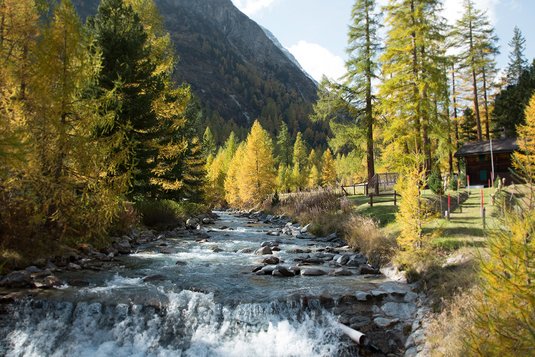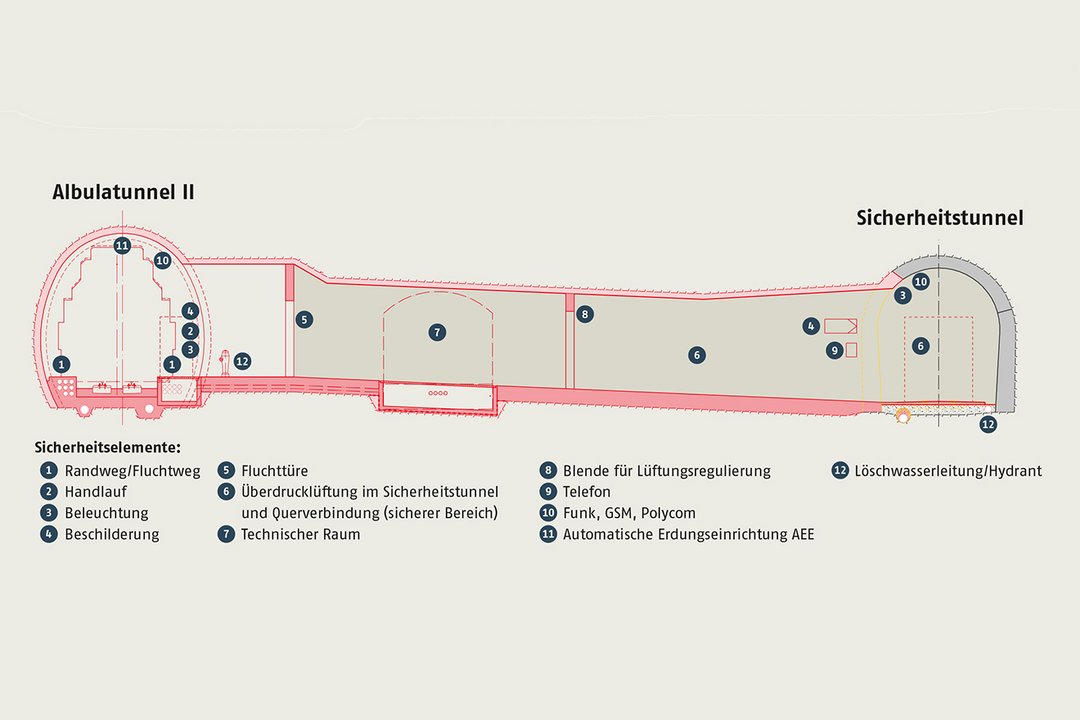Warenkorb
Sie haben keine Produkte im Warenkorb.
Ve zvoleném jazyce nejsou k dispozici všechny obsahy. Chcete se podívat do světa Rhétské dráhy? Přejít na anglický.
A wide range of factors need to be taken into account when dealing with a project of this order of magnitude. One of these is the tunnel link of the UNESCO World Heritage “Rhaetian Railway in the Albula/Bernina Landscapes”, which needs to take this status into account. Environmental and safety aspects also need to be considered.
Why a new tunnel?
The Albula Tunnel between Preda and Spinas, which was inaugurated in 1903, is now a UNESCO World Heritage site. An examination of the state the 110-year-old Albula Tunnel, carried out in 2006, revealed an urgent need for general refurbishment and modernised safety features. The inner walls of more than half of the 5,864 metre-long tunnel are in a bad state, and require replacement. After a detailed examination of the two alternatives of repairing or rebuilding, the RhB decided, in 2010, on the latter. The clinching arguments in this respect were the relatively minor difference in cost, the lack of relevant disruption to timetabling during the construction phase and the considerably improved safety offered by a rebuild. The rebuild also guarantees high quality and advantages with respect to sustainability.

Once the Albula Tunnel II has been inaugurated, its original counterpart will be decommissioned and converted into a safety tunnel.
Taking World Heritage status into account
The Albula Tunnel is, as part of the Thusis-to-St.Moritz line, likewise part of the UNESCO World Heritage “Rhaetian Railway in the Albula/Bernina Landscapes”. The Rhaetian Railway cooperated closely, throughout the planning of the new tunnel, with the cantonal and Swiss federal authorities in charge of listed buildings. All changes affecting its outer appearance, layout and relation to the surrounding land were taken into account. The results were then incorporated into a master plan designed to provide guidelines for dealing with the combination of historic building and new structure.
Sustainable construction
The site was prepared largely from the railway itself, which required the construction of temporary stations at both ends of the tunnel. These temporary facilities occupy large areas of land near to each tunnel entrance. The resulting rubble is to be processed in Preda for reuse as hardcore in the subsequent concreting and formwork. A site known as Las Piazzettas has been designated for the burying and landscaping of up to 250,000 cubic metres of material found to be of insufficient quality for this purpose.
Guaranteed environmental compatibility
The entire project was the subject of an environmental impact study. This report shows the effects of the new structures, during both their construction and operating phases, on the environment; while establishing a set of appropriate protective measures for people, animals, the landscape, air quality and water.

Environmental study of the RhB above the Albula Tunnel, showing the colouration of Lake Palpuogna. © RhB, Barbara Schellenberg

An environmental impact study establishes the required safety and environmental-protection measures.
Safety
The approach to safety used in the Albula Tunnel is based on the principle of self-rescue. The facilities and their technical equipment fulfil the legal safety requirements applicable to railways. If an incident should occur, short escape routes and safety equipment, along with transverse accesses to the safety tunnel, are on hand to ensure fast evacuation from the scene of any accident. The air in the safety tunnel is pressurised to prevent smoke seeping in from the main tunnel in the event of a fire.

Cross-sectional view of the link between the Albula Tunnel II and the future safety tunnel.